Madrid Travel Guide: Local Tips for your TripMadrid, ...
Madrid Travel Guide: Local Tips for your Trip
Madrid, the dazzling capital of Spain, beckons travelers with its rich tapestry of culture, history, and modern vitality. A city of grand boulevards, world-famous art, and lively plazas, Madrid offers an immersive experience that combines the charm of its past with the buzz of its present.
Whether you're sipping wine at a tapas bar, admiring Velázquez’s masterpieces at the Prado, or dancing until dawn, Madrid is a city that leaves you longing to return.
What You Need to Consider Before Visiting Madrid in 2025
Madrid in 2025 promises a dynamic travel experience, with the city’s blend of old-world charm and modern developments continuing to attract visitors from around the globe. Here are some key points to keep in mind:
- Seasonal Highlights: From the vibrant San Isidro Festival in May to the winter lights of Plaza Mayor, Madrid’s events calendar is packed year-round.
- New Attractions: Explore Madrid's continually evolving art and dining scenes, with newly opened galleries, Michelin-starred restaurants, and revamped public spaces.
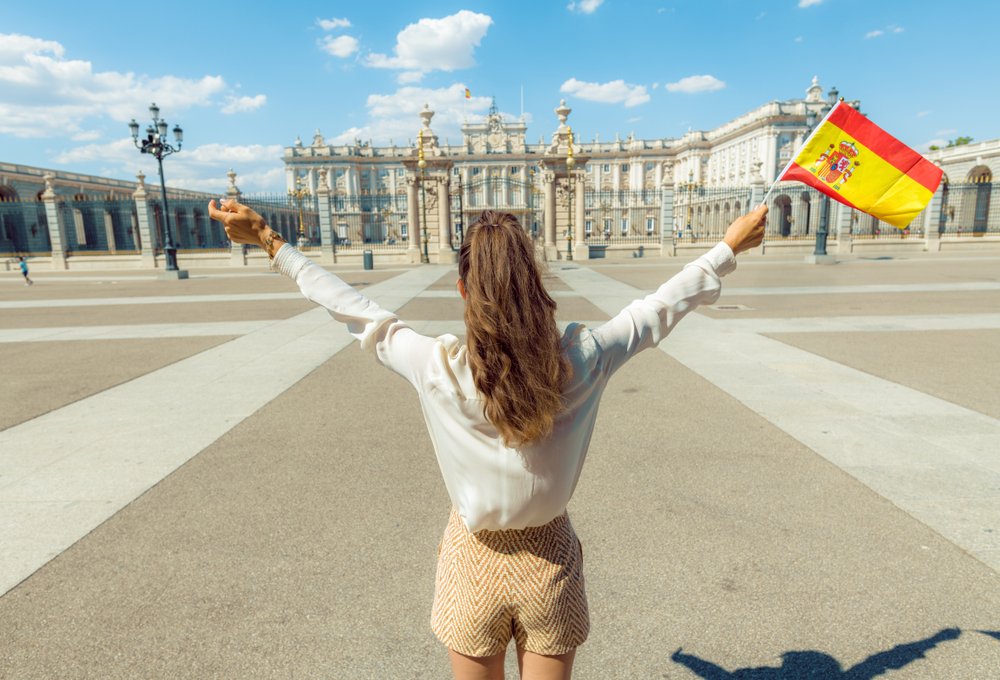
Where is Madrid Located?
Madrid is located at the geographic heart of Spain on the elevated Meseta Central plateau. Its central position makes it a key hub for transport and commerce, easily accessible from all corners of the country. Surrounded by historic towns and picturesque landscapes, Madrid is also a gateway to Spain’s diverse cultural regions.
Quick Facts about Madrid, Spain
- Population: Approximately 3.4 million residents
- Language: Spanish (Castilian)
- Currency: Euro (€)
- Time Zone: Central European Time (CET)
- Climate: A Mediterranean climate characterized by hot summers and mild winters
- Known For: The Royal Palace, Prado Museum, Retiro Park, and its vibrant nightlife

Getting to Madrid
Madrid, a city renowned for its rich history, world-class museums, and vibrant Spanish culture, is easily accessible through a variety of transportation options, each offering a seamless way to reach this dynamic destination.
Whether you’re flying in, traveling by train, or arriving by bus, reaching Madrid is a smooth and enjoyable part of your journey. Here’s an overview to help you navigate your way to Spain's captivating capital:
Transportation Options:
Arriving and Getting Around in Madrid
Arriving and Getting Around in Madrid
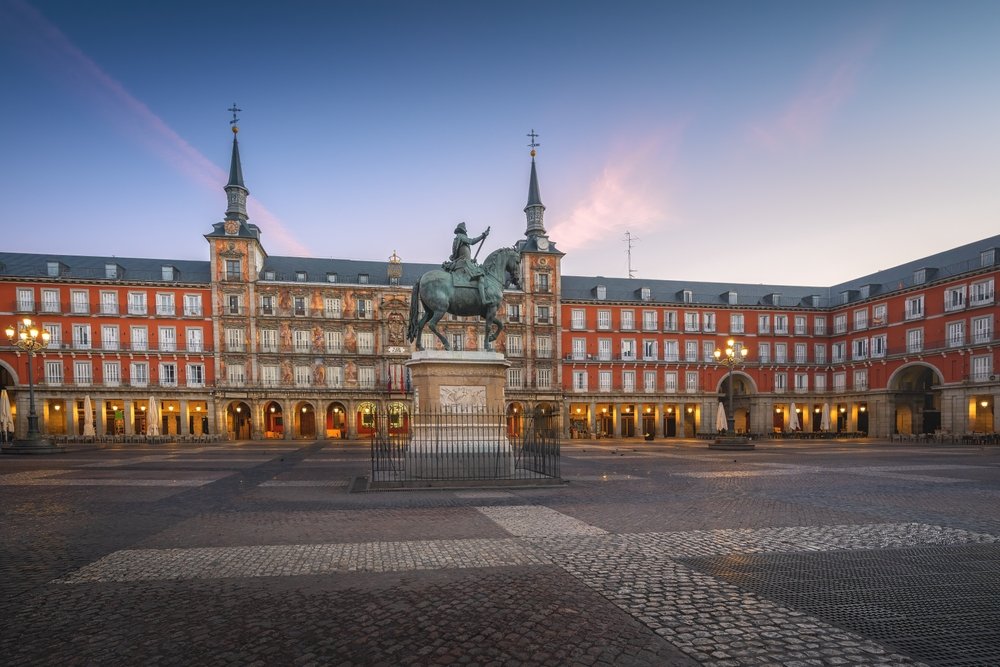
History of Madrid
Madrid’s history is a tale of transformation, from its origins as a Moorish outpost in the 9th century to its rise as the Spanish capital in 1561 under King Philip II.
Over centuries, it has grown into a global city while retaining its royal roots, reflected in landmarks like the Royal Palace and Plaza Mayor.
Madrid's history is written into its streets, offering a glimpse of the past at every turn.
Architecture in Madrid
Madrid’s architecture tells a story of its rich and varied past:
- Habsburg Madrid: Explore the historic districts with their quaint plazas and baroque buildings.
- Bourbon Influence: Marvel at grand boulevards like Paseo del Prado, lined with neoclassical facades.
- Modern Marvels: From the skyscrapers of Cuatro Torres to the CaixaForum’s green wall, Madrid embraces the contemporary with flair.

Must-See Attractions in Madrid
Unmissable Experiences in Madrid
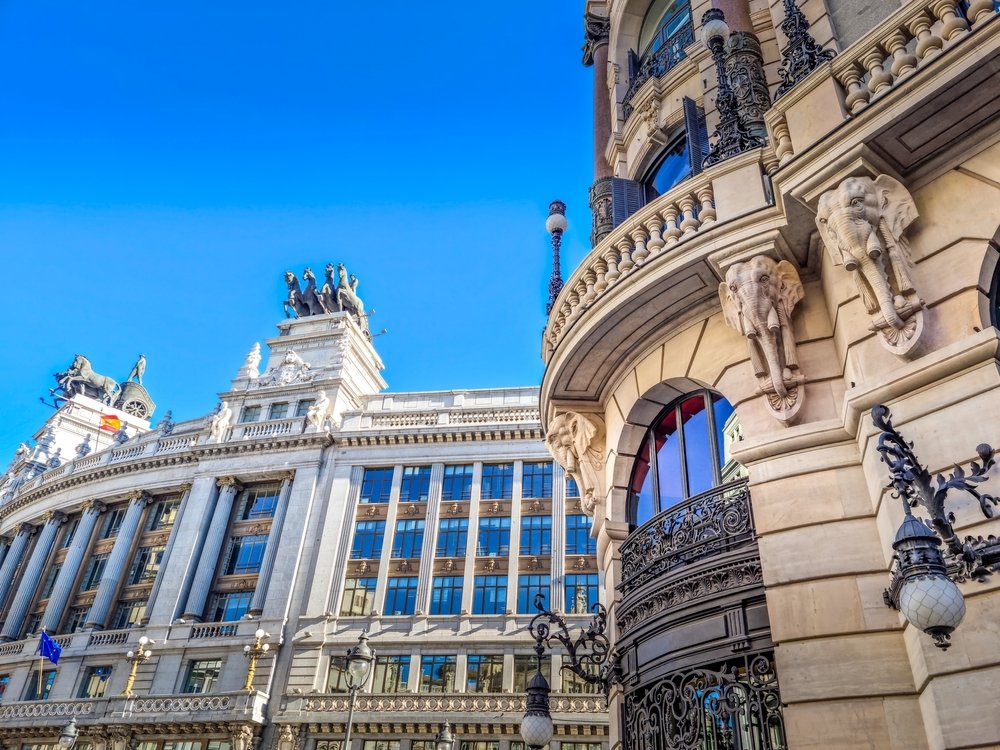
Modern Culture in Madrid
Madrid is a city where the past gracefully intertwines with the present, creating a vibrant cultural tapestry that reflects its evolution into a modern European capital. Beyond its historic landmarks and traditional charm, Madrid boasts a thriving contemporary culture that makes it a dynamic hub for art, innovation, and social life.
Here's a closer look at the facets of modern culture in Madrid:
Going out at Night in Madrid

When is the Best Time to Visit Madrid?
Madrid is a year-round destination, with each season offering its own unique charm and experiences. However, depending on your preferences for weather, events, and crowd levels, certain times of the year may suit your trip better. Here's a breakdown of the best times to visit Madrid:
Public Holidays and School Breaks in Spain
Public holidays and school breaks in Spain, particularly the summer holiday, can greatly affect crowds at Madrid's main attractions, as well as opening hours, accommodation prices, and access to certain sites.
If you prefer to avoid large crowds, consider visiting Madrid outside these times. However, holidays can also bring a festive vibe with unique cultural events—it's all about what you prefer! Here’s an overview of major holidays in Spain:
- New Year's Day (January 1st)
- Epiphany (January 6th)
- Good Friday (varies by year, typically in March or April)
- Labour Day (May 1st)
- Assumption of Mary (August 15th)
- National Day of Catalonia (September 11th)
- Hispanic Day (October 12th)
- All Saints' Day (November 1st)
- Constitution Day (December 6th)
- Immaculate Conception (December 8th)
- Christmas Day (December 25th)
- St. Stephen's Day (December 26th)
School holidays in Spain vary by region, but generally follow a similar schedule with breaks during:
- Christmas and New Year (around two weeks)
- Easter (one week)
- Summer break (late June to early September)
These holidays can bring vibrant celebrations, but also higher visitor numbers at major sites in Madrid.
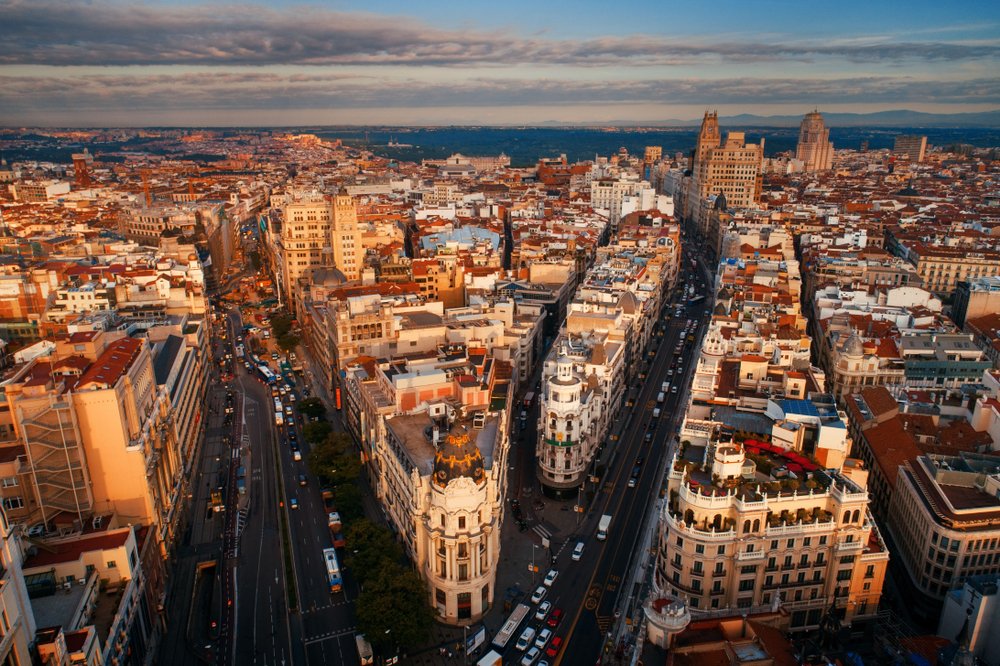
How Much Time Should I Plan to Visit Madrid?
- Short Visit: 2–3 days to cover Madrid’s main attractions.
- Ideal Length: 4–5 days to fully immerse yourself in Madrid’s culture and history.
- Extended Stay: 7+ days to enjoy day trips and live like a local.
Madrid’s rich history, dynamic culture, and warm atmosphere ensure a rewarding experience, no matter how long you stay!
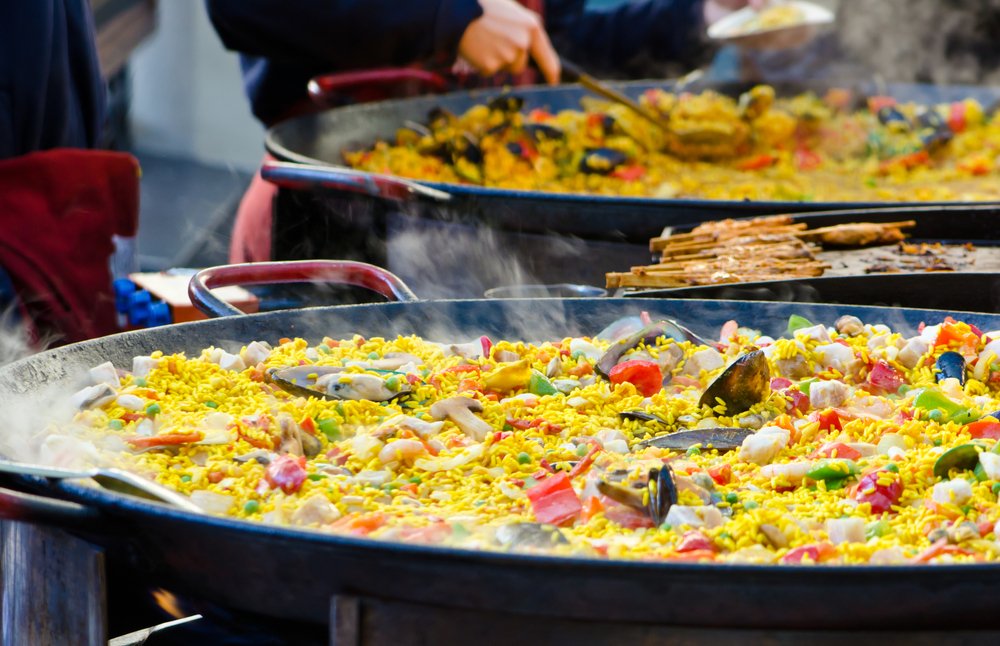
Eating Out in Madrid
Madrid’s culinary scene is a feast for the senses, offering a delightful mix of traditional Spanish dishes, innovative gastronomy, and an unparalleled tapas culture. From cozy neighborhood taverns to Michelin-starred restaurants, the city caters to every palate. Madrid's food reflects its vibrant culture, with influences from across Spain, making dining out a journey through the country’s rich flavors.
Eating in Madrid isn’t just about the food—it’s an experience steeped in lively conversations, buzzing markets, and late-night feasts that embody the city’s warm, social spirit.
Fresh, Seasonal Ingredients
Madrid’s cuisine celebrates the essence of fresh, seasonal ingredients sourced from across Spain. Expect dishes featuring ripe tomatoes, tender asparagus, rich olives, and high-quality meats and seafood. Traditional recipes often highlight these flavors with olive oil, garlic, and herbs, creating simple yet irresistible combinations.
Simplicity and Balance
Madrid’s culinary philosophy revolves around letting the ingredients speak for themselves. Whether it’s a plate of jamón ibérico or a comforting cocido madrileño, dishes are prepared with minimal interference, focusing on balance and authenticity. This approach ensures every meal is satisfying and packed with natural flavors.
Restaurants
Madrid offers countless dining options, from historic taverns to trendy bistros:
Casa Lucio: Famous for its huevos rotos (broken eggs) and traditional Castilian dishes.
Sobrino de Botín: The world’s oldest restaurant, known for its roast suckling pig.
La Bola: A family-run eatery serving some of the best cocido madrileño in the city.
Regional Specialties
Madrid’s specialties reflect its central location and role as a cultural melting pot. Highlights include:
Cocido Madrileño: A hearty chickpea stew perfect for cooler days.
Bocadillo de Calamares: Crispy fried calamari served in a crusty bread roll, a staple snack in Plaza Mayor.
Torrijas: A sweet treat similar to French toast, often enjoyed during Easter.
Sangria: The Taste of Madrid
Sangria is more than just a drink; it’s a celebration of Madrid’s lively spirit. Made with red wine, fresh fruits, and a splash of soda or brandy, it’s the perfect refreshment on a warm afternoon. Enjoy it at a terrace café in Plaza Mayor or at one of Madrid’s vibrant markets like Mercado de San Miguel. A sip of sangria is all it takes to feel the soul of Spain.
Desserts
Madrid’s dessert scene offers indulgence for every sweet tooth. Favorites include:
Churros con Chocolate: A classic snack best enjoyed at Chocolatería San Ginés, an institution since 1894.
Rosquillas: Traditional Spanish donuts, popular during festivals like San Isidro.
Tarta de Santiago: An almond cake often accompanied by a glass of sweet wine.
Wine & Beer Culture in Madrid
Madrid’s wine and beer culture is as dynamic as the city itself. Discover robust Rioja reds or refreshing Rueda whites at traditional wine bars like La Venencia, known for its historic charm. Beer enthusiasts can explore Madrid’s thriving craft beer scene, with spots like Cervecería La Virgen offering locally brewed pints. Whether savoring a glass of wine in a classic tavern or enjoying a beer on a sunny terrace, Madrid offers something for every taste.
Tapas Culture in Madrid
Tapas are an essential part of life in Madrid, embodying the city's love for socializing and great food. Whether it's a quick bite at a bustling bar or a leisurely evening sampling a variety of flavors, tapas bring people together. Visit the iconic Mercado de San Miguel for a gourmet experience or explore the vibrant La Latina district for traditional tapas bars that buzz with local charm.
Classic Catalan Dishes You Must Try
- Paella: A well-loved rice dish with seafood or mixed ingredients. Try it at Can Solé in Barceloneta for an authentic experience.
- Escalivada: Roasted peppers, eggplant, and onions drizzled with olive oil, often served as a side or on toast. Bar Cañete offers a delicious version of this Catalan staple.
- Fideuà: A paella-like dish made with noodles instead of rice, typically served with seafood. El Suquet de l'Almirall is renowned for its flavorful fideuà.
Where and What to Eat in Madrid?

Where to Stay in Madrid
Choosing the right neighborhood in Madrid can elevate your experience, offering a perfect base for exploring the city’s iconic attractions and vibrant culture. Madrid’s neighborhoods (or barrios) each have their own unique character, from historic quarters to upscale districts and bohemian hubs.
For first-time visitors, staying in the city center around Puerta del Sol or Plaza Mayor ensures proximity to Madrid’s top sights. For luxury seekers, the elegant Salamanca district provides premium accommodations near designer boutiques. Meanwhile, Malasaña and La Latina are ideal for those craving a lively nightlife scene and local charm.
Here are some of Madrid's most popular neighborhoods:
Recommended Hotels in Madrid
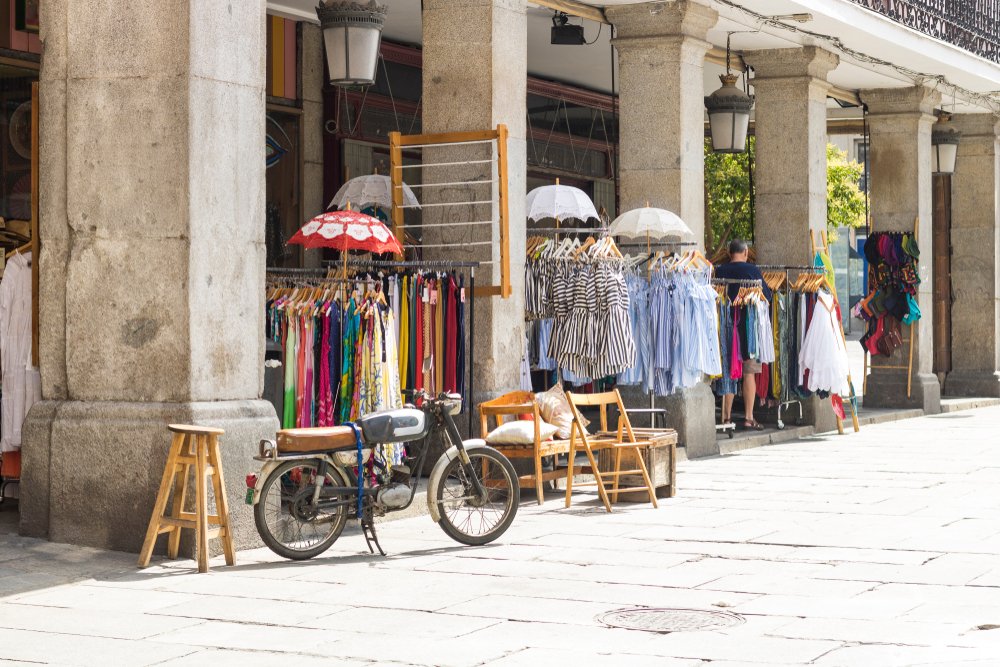
Madrid Shopping Guide
Madrid is a paradise for shoppers, blending traditional craftsmanship with modern fashion. From bustling markets like El Rastro to high-end boutiques along Calle Serrano, the city offers a diverse range of shopping experiences.
Whether you’re hunting for unique souvenirs, luxury goods, or cutting-edge Spanish design, Madrid has it all. Explore its vibrant shopping districts, discover world-famous Spanish items, and take home a piece of the city’s charm. Shopping in Madrid isn’t just about buying—it's about immersing yourself in its lively culture.
What You Should Buy in Madrid
World-Famous Spanish Items
Unique Items Exclusive to Madrid
Travel Tips for Madrid
Madrid is a city that effortlessly combines history, culture, and modern charm, offering an unforgettable experience for visitors. To make the most of your trip, it’s essential to navigate the city like a local, embrace its traditions, and prepare for its unique rhythms.
Here are some essential tips to help you enjoy everything Madrid has to offer:
Plan and Conquer Online
- Use the Metro: Madrid’s metro system is fast, affordable, and connects all major attractions efficiently.
- Mind Siesta Hours: Many smaller shops and restaurants close in the afternoon, so plan activities accordingly.
- Try Tapas Bars: Enjoy the city’s vibrant food culture by visiting local tapas bars for small plates and drinks.
- Watch for Pickpockets: Keep an eye on your belongings in crowded areas like Puerta del Sol and on public transport.
- Book Museum Tickets Online: Save time by purchasing tickets for popular attractions like the Prado in advance.
- Learn Basic Spanish: Simple phrases like "por favor" (please) and "gracias" (thank you) can make interactions smoother.
- Carry Comfortable Shoes: Madrid is a walkable city with cobblestone streets, so pack supportive footwear.
- Stay Hydrated in Summer: Summers can be hot; always carry a water bottle, especially when sightseeing outdoors.
Download Apps and Ressources
- Google Maps: Essential for navigating Madrid’s streets, public transport, and nearby attractions with ease.
- Madrid Metro App: Stay updated on metro schedules, routes, and service updates for efficient travel.
- Duolingo: Brush up on your Spanish with this language-learning app to make interactions more engaging.
- El Tenedor (TheFork): Discover and reserve tables at Madrid’s best restaurants, often with discounts.
- Glovo or Deliveroo: Perfect for ordering food or essentials straight to your accommodation.
- Cabify: A reliable ride-hailing app that’s popular in Madrid for safe and convenient transport.
- Eventbrite: Stay informed about local events, festivals, and cultural activities during your stay.
- Visit Madrid Official Website: Access the city’s official tourism resources, including guides, maps, and event details.
Fun Facts about Madrid
Madrid is a city full of surprises, with a rich history, quirky traditions, and unique features that set it apart. Here are some fun and fascinating facts about Spain’s vibrant capital:
These fun facts highlight the rich history, vibrant culture, and unique charm that make Madrid an endlessly fascinating city.


